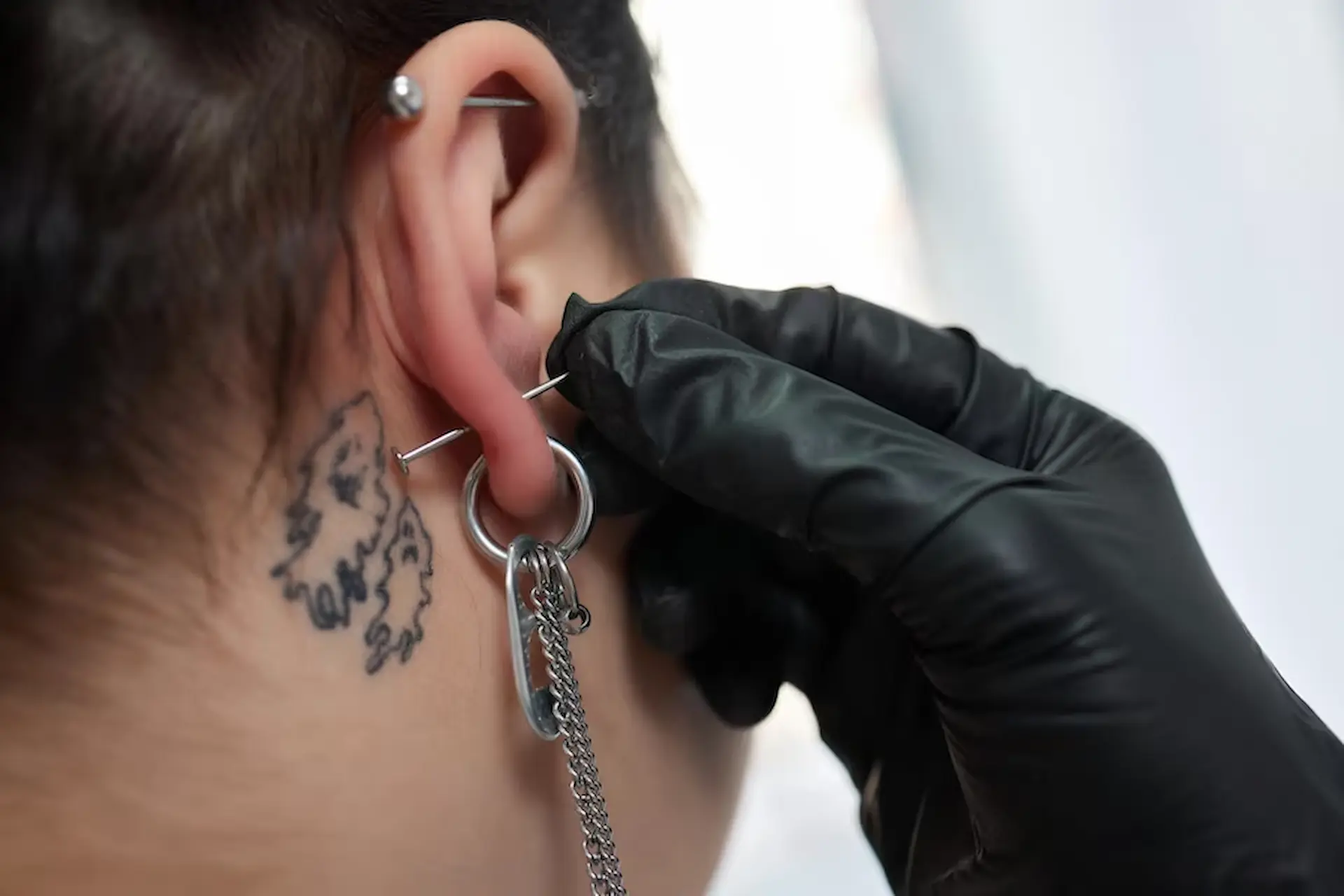Piercing Scale of Pain: What You Should Know
The experience of getting a new body Piercing Scale Of Pain excites people yet most need to know the extent of pain they will feel during the procedure. Everybody feels and tolerates pain differently however our understanding of piercing-related pain comes from experiences shared by many people. A basic guidance exists for piercings starting from painless options and progressing to those that produce intense eye-watering reactions.
🔹 1–2/10: Minimal Pain Piercings
The least painful piercings heal at a rapid pace. Most individuals detect these piercings only through a small amount of pressure.
- Earlobe Piercing (1/10):
Classic and quick. Piercing Scale Of Pain creates a brief and mild pinching sensation that would last only for one second. Heals in 6–8 weeks. - Nostril Piercing (2/10):
A slightly sharper pinch than the earlobe, with a bit of eye-watering. Most people have stated that the procedure’s tolerance level is reasonable alongside its rapid healing time.
🔹 3–4/10: Mild Pain Piercings
These piercings go through slightly thicker or more sensitive skin, but still manageable for most people.
- Helix/Cartilage Piercing (3/10):
A sharp pinch and some pressure. The sound of the cartilage popping can be the most uncomfortable part. - Lip Piercing (Labret/Monroe/Medusa – 4/10):
Feels like a bee sting. Inner lip tissue is soft, so the piercing is fairly quick, but expect some swelling. - Eyebrow Piercing (4/10):
Not bad for most—just a light sting and a tug. Feels like plucking a thick eyebrow hair.
🔹 5–6/10: Moderate Pain Piercings
You’ll definitely feel these, but they’re over quickly. Slightly more intense due to skin thickness or nerve proximity.
- Septum Piercing (5/10):
Pierced through the “sweet spot” of skin between cartilage—can be surprisingly easy if done right. Some nose tingling. - Nipple Piercing (6/10):
Very sensitive area. Pain level depends on anatomy and piercer’s speed. Most people feel a burning or pinching sensation followed by a dull ache. - Tragus Piercing (5–6/10):
Small cartilage nub near the ear canal. Feels like intense pressure and a pop.
🔹 7–8/10: High Pain Piercings
These areas are sensitive, have thicker tissue, or are near nerve endings. Not for the faint of heart!
- Daith Piercing (7/10):
Cartilage inside the ear. Harder to access, so more pressure and popping sounds. - Rook Piercing (8/10):
Deep cartilage fold. This one’s intense due to location and tissue density—pressure + sharp pain. - Genital Piercings (7–8/10):
Varies by anatomy and type. Intimate and nerve-rich area = high sensitivity, but some find it empowering.
🔹 9–10/10: Extreme Pain Piercings
These are often done for body mod, not style. Most people report significant pain, pressure, or discomfort.
- Industrial Piercing (9/10):
Two cartilage holes connected by a bar. Double the piercings, longer healing, and more pressure. - Dermal Anchors (8–9/10):
Involves creating a pocket under the skin. More complex than surface piercings. - Surface Piercings (9–10/10):
Pierced under flat skin (like the hip, neck, wrist). Often rejected or irritated. Pain level varies by body area.
🛑 Pain Isn’t the Whole Story
The discomfort of getting pierced will pass yet the excellent piercing will last unless you do not maintain proper aftercare. You will have a superior Piercing Scale Of Pain experience through working with a professional piercer in a sanitary establishment with correct post-procedure care.
Things That Affect Pain Perception:
- Your mental state (nervousness = more pain)
- Skill of your piercer
- Hormonal cycles (especially for nipple/genital piercings)
- Amount of sleep, hydration, and nutrition
🔧 Final Thoughts
A Piercing Scale Of Pain experience does not exist yet understanding your expected level of pain during the procedure will prepare you mentally. Select a properly licensed professional along with controlled deep breathing will help you remember that the temporary discomfort is short-lived even though the style expression and lasting confidence you get from it matter. That lasts.



